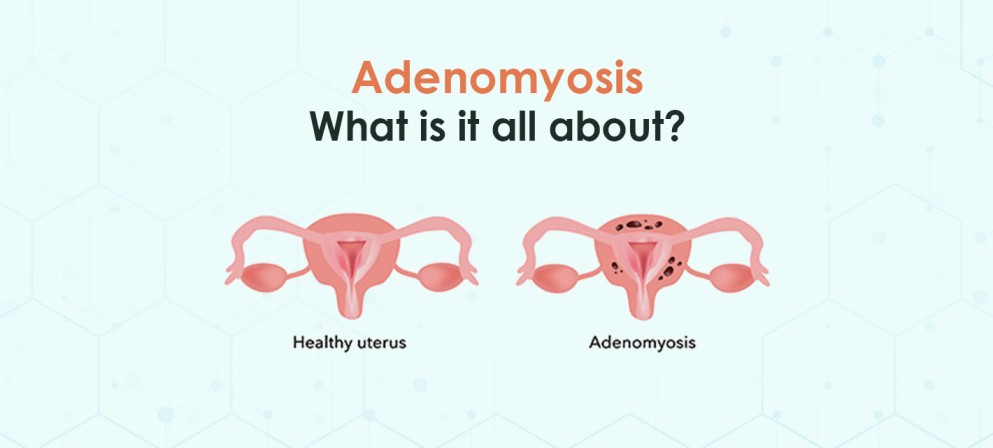
The lining of the womb or the endometrium usually passes out of the vagina along with blood during periods. If this lining for some reason starts to invade the walls of the uterus the result is a disease called Adenomyosis. It is present in 80% of women with endometriosis.
The women typically present with very painful and heavy periods and Infertility.
It can be conclusively diagnosed only with a biopsy, but it shows certain characteristics very specific to it on 3D ultrasound and MRI wherein one can pick up the disease.
What Are the Symptoms of Adenomyosis?
Adenomyosis can cause various symptoms, including:
Heavy or prolonged menstrual bleeding: Adenomyosis can cause heavy or prolonged menstrual bleeding, which can lead to anemia and fatigue.
Painful periods: Women with adenomyosis may experience more severe cramps during menstruation than usual.
Painful sex: Adenomyosis can also cause pain during sexual intercourse.
Pelvic pain: Women with adenomyosis may experience chronic pelvic pain, which can be dull, aching, or sharp.
Abdominal bloating: Adenomyosis can cause abdominal bloating or swelling.
Irregular bleeding: Some women with adenomyosis may experience irregular bleeding between periods.
Infertility: Adenomyosis can also make it more difficult for women to become pregnant.
The severity and frequency of these symptoms can vary from person to person, and some women with adenomyosis may not experience any symptoms at all. If you are experiencing any of these symptoms, it is important to talk to your healthcare provider for proper diagnosis and treatment.
Can adenomyosis be managed? If yes, how? If not, then what does one do?
Adenomyosis can be quite stubborn. Surgical management is technically quite challenging. Medical management is the only solution, however, that too doesn’t work all the time.
Doctors try hormonal medications, Mirena, and drugs like Letrozole and Cabergolin and keep their fingers crossed. Once adenomyosis progresses beyond a point, the menstrual bleeding becomes quite heavy and painful. The scary part is, it doesn’t respond to hormones after a point thus requiring the removal of the uterus.
Mirena is the best bet available. It is an intrauterine device that releases Progesterone hormone daily in very small amounts. Doctors insert it into the uterine cavity and thereafter for 5 years the simple device can control both endometriosis and adenomyosis.
How Is Adenomyosis Treated?
Adenomyosis can cause heavy and painful periods, as well as other symptoms such as pelvic pain and discomfort during sex.
The treatment of adenomyosis may depend on the severity of the symptoms and the individual’s age and desire for future pregnancies. Here are some common treatments for adenomyosis:
Pain medication: Over-the-counter pain medication, such as ibuprofen, may help alleviate the pain associated with adenomyosis.
Hormonal therapy: Hormonal therapies, such as birth control pills, hormonal IUDs, or progestin-only therapy, can help regulate the menstrual cycle and reduce the symptoms of adenomyosis.
Uterine artery embolization (UAE): This is a minimally invasive procedure where small particles are injected into the arteries that supply blood to the uterus, blocking the blood flow to the adenomyosis tissue and shrinking it.
Endometrial ablation: In this procedure, the lining of the uterus is destroyed or removed, which can reduce heavy bleeding associated with adenomyosis.
Hysterectomy: This is a surgical procedure where the uterus is removed, and it is considered the most effective treatment for adenomyosis. It is typically reserved for women who have completed childbearing and have severe symptoms that are not relieved by other treatments.
It is important to note that adenomyosis is not a life-threatening condition, and not all women with adenomyosis require treatment. It is always advised to consult with a healthcare provider to determine the best treatment options for each case.
